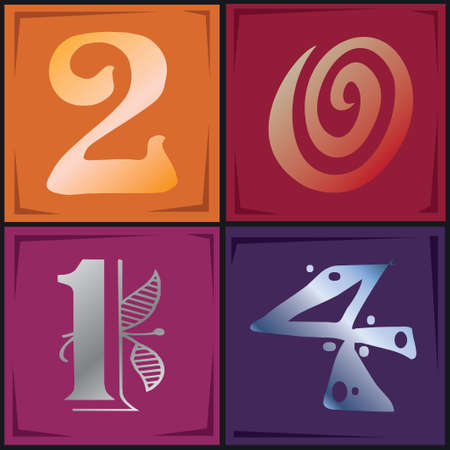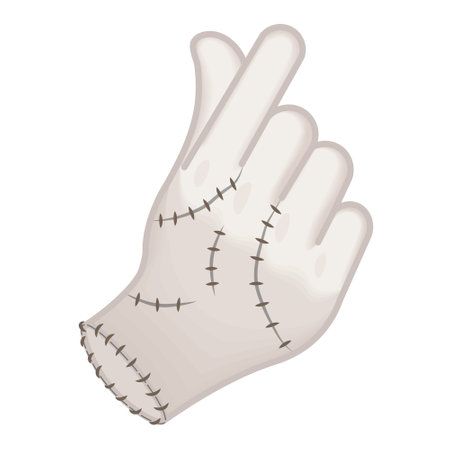Introduction to Palmistry and British Perspectives
Palmistry, or chiromancy, has fascinated people across cultures for centuries, but its journey through British history is especially intriguing. While the practice traces its roots to ancient India and Greece, palmistry found fertile ground in the UK during the Victorian era, when curiosity about the mystical and the scientific converged. Today, reading palms—especially interpreting the subtle minor branches that extend from major lines—remains an engaging blend of tradition and contemporary curiosity.
In Britain, palmistry is woven into both folklore and modern lifestyles. Many Britons encounter it at village fairs, alternative health festivals, or even over a cup of tea with friends. Far from being dismissed as mere superstition, palmistry often serves as a conversational bridge between generations—grandparents reminiscing about old Romani readers, or young professionals exploring self-discovery through ancient wisdom.
For beginners keen to decode their hands, understanding the key elements is essential. Major lines—the Heart Line, Head Line, and Life Line—form the backbone of any reading. Yet it’s the delicate minor branches that offer nuanced insights into life’s twists and turns. By examining how these branches diverge or connect, readers can interpret personal narratives that resonate with distinctly British themes: resilience during adversity, adaptability in changing times, and the pursuit of understated ambition.
This article aims to demystify the process of identifying and interpreting minor branches on major palm lines within a uniquely British context. Whether you’re a sceptic or an enthusiast, exploring this subject offers not just fortune-telling intrigue but also a fresh perspective on how cultural beliefs adapt and endure in modern UK society.
Understanding Major Palm Lines and Their Importance
When it comes to palmistry, or as some Brits affectionately call it, “having your mitts read,” the three major lines on your palm—the Heart Line, Head Line, and Life Line—are the backbone of any reading. In Blighty, these lines aren’t just seen as esoteric squiggles; they’re often discussed over a cuppa as windows into one’s quirks, potential, and well-being. Let’s unpack their core meanings and sprinkle in some proper British interpretations for good measure.
The Big Three: A British Take
| Palm Line | Typical Meaning | British Colloquial Interpretation |
|---|---|---|
| Heart Line | Emotional life, relationships, affections | “Where’s your heart at?” – Read to gauge romance and old-fashioned British reserve versus emotional openness |
| Head Line | Mental clarity, intellect, decision-making | “Got your head screwed on?” – Tells if you’re clever as a fox or prone to faffing about |
| Life Line | Vitality, physical health, life journey | “Fit as a butcher’s dog?” – Reflects stamina and the ups and downs of one’s path through life |
The Heart Line: Matters of the Heart with a British Twist
This line arcs across the top of the palm. In classic British palmistry circles, it’s used not just to predict romantic entanglements but also to highlight whether someone’s likely to keep a stiff upper lip or wear their heart on their sleeve. A bold, unbroken line might have your local reader saying you’re “as steady as Big Ben,” while lots of breaks could mean a bit more drama—perhaps “all fur coat and no knickers.”
The Head Line: Sorting the Wheat from the Chaff
Sitting below the Heart Line, this marker is all about wit and wisdom. Brits love a sharp mind—and a quick wit is always appreciated down at the pub. A long Head Line suggests you’re “no mug,” while a short or forked line could mean you “think outside the box” or sometimes “go off at a tangent.” It’s all about how you approach problems—methodical like a game of chess or spontaneous like a round of pub trivia.
The Life Line: More Than Just Longevity
This curve runs around the base of the thumb toward the wrist. Contrary to popular myth (especially among those unfamiliar with British understatement), its length doesn’t predict when you’ll pop your clogs. Instead, it highlights energy levels and resilience—are you “full of beans” or do you need “a good lie-in”? Brits may chuckle that a strong Life Line means you’re likely to weather storms with classic British grit.

3. Identifying Minor Branches: A Practical Guide
Spotting minor branches on major palm lines can initially feel like searching for a needle in a haystack, but with the right approach, it’s as straightforward as finding your way on the London Underground. Here’s a step-by-step guide to help you confidently identify these subtle yet significant markings.
Step 1: Set the Scene
Begin by washing your hands and drying them thoroughly—think of this as prepping your workspace, much like laying out your tools before a spot of DIY. Good natural lighting is essential; position yourself near a window or use a desk lamp to cast soft light across your palm, revealing every crease and detail.
Step 2: Locate the Major Lines
The three primary lines—the Heart Line, Head Line, and Life Line—are your starting points, akin to the main roads on an A-Z map of London. Identify these first; they usually appear deeper and longer than the others. If you’re unsure, gently flex your hand; major lines typically remain visible regardless of movement.
Step 3: Scan for Subtle Offshoots
Now, look closely at each major line. Minor branches are like side streets veering off from the main road—they can be short or long, faint or pronounced. Use a magnifying glass if needed (no shame in borrowing granny’s reading specs here) and trace the path of each line slowly, paying attention to any smaller lines that intersect or split away.
Hands-On Tips for Accurate Identification
- Angle Your Palm: Tilt your hand at different angles to catch how light falls on each line; sometimes, minor branches only reveal themselves when viewed askew, much like hidden details in a Turner painting.
- Use Your Fingertip: Gently run your finger along the major lines—your sense of touch can often pick up subtle ridges that the eye might miss.
- Pace Yourself: Don’t rush; take your time as you would when queuing for tea at a proper British café. Patience uncovers more detail.
British Analogies for Clarity
If you imagine the major palm lines as iconic motorways like the M25 or M1, minor branches are those little country lanes darting off into the countryside. They may seem less travelled, but they often lead to intriguing destinations—each one telling its own unique story about your character and life journey.
4. Common Types of Minor Branches and What They Suggest
Minor branches on major palm lines may seem like fleeting details, yet they often hold subtle messages about our everyday experiences, challenges, and outlooks—much like the understated nuances of British life itself. Let’s review some prevalent minor branch patterns and interpret their significance with insights that resonate with contemporary British values such as resilience, community spirit, and a balanced perspective.
Typical Minor Branch Patterns
| Branch Type | Description | British Interpretation |
|---|---|---|
| Upward Branches | Lines branching away from the major line towards the fingers | Signifies optimism, ambition, or upward mobility—a nod to the classic “keep calm and carry on” attitude found across Britain |
| Downward Branches | Lines dipping downwards from the main line | Often points to obstacles or setbacks but also reflects the British trait of taking adversity in stride and finding humour even in hardship |
| Cross-Branches | Branches running horizontally or intersecting with other lines | May suggest crossroads or life choices, echoing the value placed on careful decision-making and pragmatism in daily British life |
| Forked Branches (“Y” shapes) | Main line splitting into two or more minor branches at an end point | Indicates flexibility and adaptability—a characteristic essential for navigating unpredictable weather or shifting social landscapes in the UK |
| Island Branches | Small ovals or loop-like formations along a branch | Might represent periods of stress or introspection; much like taking a quiet moment for tea to regroup and reflect before moving forward |
The Everyday Relevance of Minor Branches
The meaning behind these branches is often best understood through the lens of daily British experience. For instance, upward branches can be seen in those who consistently strive to improve their lot—mirroring stories of personal progress found everywhere from bustling London high streets to rural village greens. Conversely, downward branches remind us that everyone encounters their fair share of rainy days, but what matters most is how one responds—with a dry wit or stoic resolve.
A Blend of Tradition and Modern Insight
While palmistry has its roots in ancient traditions, interpreting minor branches today involves blending symbolism with lived realities. Whether it’s handling workplace dilemmas (cross-branches), adapting to unexpected changes (forked branches), or simply managing stress (island branches), these markings serve as metaphors for navigating modern British life. Ultimately, reading these minor branches encourages self-reflection and embraces the enduring wisdom that small details often shape our broader journey—much like the seemingly ordinary moments that define British culture.
5. Interpreting Minor Branches Within a British Context
When exploring the subtle art of reading minor branches on major palm lines, it’s essential to acknowledge how local British culture, climate, and lifestyle can shape both their manifestation and their interpretation. In the UK, where tradition and modernity intertwine, these influences are especially pronounced.
The Influence of Weather and Environment
The famously changeable British weather—often grey, damp, and unpredictable—fosters a national temperament marked by adaptability and resilience. Palmists in Britain might interpret minor branches that fork from the life line as indicators of one’s capacity to adapt to shifting circumstances, echoing the British “keep calm and carry on” spirit. For example, a branch veering towards the mount of Moon might be seen as a sign of creative escapism or a yearning for sunnier climes—an understandable desire when faced with weeks of drizzle.
Cultural Nuances in Palm Reading
British society values understatement and reserve; thus, palm readers here may view faint or subtle minor branches as signs of inner strength or hidden talents rather than bold declarations of fate. A tiny upward branch from the heart line could be interpreted as a quiet but deep-seated optimism—a hallmark of the classic British stiff upper lip. Similarly, branches near the head line might suggest intellectual curiosity shaped by Britain’s rich academic heritage.
Lifestyle Patterns Reflected in Minor Branches
The British work-life balance, which often prizes leisure pursuits like gardening, walking in the countryside, or enjoying a pint at the local pub, might manifest as gentle diversions on the fate line. These minor branches could indicate periods where personal contentment is prioritised over career ambition, reflecting national attitudes towards wellbeing and relaxation. If a minor branch appears during midlife years, a palmist may interpret this as a nod to traditions such as “early retirement” or taking up new hobbies post-career.
Examples Grounded in UK Reality
Consider someone whose life line displays several small branches leading towards Venus mount—the area associated with family ties. In the context of strong British familial bonds and community traditions (think Sunday roasts or village fêtes), this could denote repeated returns to home comforts throughout life. Likewise, a minor branch intersecting with the head line during university years might symbolise an educational journey typical for many young Brits navigating student life in historic university towns like Oxford or St Andrews.
Ultimately, interpreting minor branches on major palm lines within a British framework means reading not only the hand but also the heart of local experience—where weather, custom, and culture all leave their mark.
6. Practical Tips and Ethical Boundaries
When it comes to identifying and interpreting minor branches on major palm lines, offering guidance respectfully is just as important as technical accuracy. In the UK, etiquette and privacy are held in high regard, so it’s essential to approach palmistry with sensitivity. Here are some practical tips for maintaining professionalism while respecting British cultural norms.
Respecting Personal Space and Consent
Before you examine anyone’s palm, always ask for their permission first. A polite request such as, “Would you mind if I take a closer look at your palm?” demonstrates respect for personal boundaries—an absolute must in British culture. Never assume consent or pressure someone into participating.
Confidentiality Matters
The information gleaned from reading someone’s palm can be quite personal. Refrain from sharing details of a reading with others unless you have explicit permission. Upholding confidentiality not only builds trust but also aligns with the British value of discretion.
Mindful Language and Interpretation
When discussing what minor branches might suggest about life events or character traits, use language that is open-ended and non-judgemental. For example, instead of making definitive statements (“You will experience hardship soon”), opt for softer suggestions (“This branch might indicate a time of change; how you navigate it is up to you”). This approach respects individual autonomy and avoids undue influence.
Avoiding Overreach
Steer clear of making health or legal predictions, as this can cross ethical boundaries and potentially cause distress. If a querent asks for advice beyond your expertise, gently redirect them: “That’s a fascinating question, but I recommend speaking to a qualified professional.”
Cultural Awareness and Sensitivity
Be mindful of diverse backgrounds and beliefs within the UK. Not everyone views palmistry through the same lens; some may see it as light entertainment, while others may hold deeper convictions. Always tailor your approach accordingly and avoid imposing your interpretations.
Responsible Sharing
If you wish to discuss an interesting reading or pattern, anonymise any details and focus on general observations rather than specifics tied to an individual. This protects privacy and models responsible practice in both casual conversation and more formal settings.
By following these practical tips and ethical boundaries, you’ll ensure your palmistry practice is both insightful and respectful—qualities that embody the best of British etiquette.
7. Self-Reflection and Personal Growth Through Palmistry
When we pause to explore the minor branches on our major palm lines, we’re not simply engaging in fortune-telling—we’re embarking on a journey of self-reflection and personal growth. The intricate web of lines on our palms can serve as a mirror, encouraging us to consider how our past experiences, aspirations, and personal challenges are etched into our present lives. In the British context, where self-awareness and understated introspection are often valued, palmistry offers an unconventional yet meaningful tool for mindful self-exploration.
The Power of Personal Narrative
Minor branches often represent turning points or subtle influences that shape our path. Reflecting on these lines invites us to ask: What crossroads have I encountered? Where have unexpected opportunities or setbacks led me? By interpreting these nuances with an open mind, you can develop a richer understanding of your own story—echoing the British appreciation for nuanced storytelling and self-understanding.
Drawing from Cross-Cultural Wisdom
Palmistry has roots across many cultures, each offering unique perspectives on fate and free will. In Britain’s multicultural society, blending Eastern philosophies (which emphasise harmony and destiny) with Western traditions of personal agency can inspire a balanced approach to self-care. Instead of seeking definitive answers, use palmistry as a prompt for gentle inquiry into your character strengths, emotional patterns, and life choices.
Mindful Self-Care Practices
Inspired by both global and British approaches to well-being, try pairing palmistry with practices like journalling, meditation, or quiet walks in nature—favourite forms of reflection in the UK. After examining your minor palm branches, jot down any insights or questions that arise. Consider how these revelations resonate with your daily habits or long-term goals. Embrace this process not as a quest for certainty but as an invitation to cultivate greater self-compassion and resilience.
Ultimately, identifying and interpreting minor branches on your major palm lines can become a deeply personal ritual—a blend of curiosity, tradition, and mindful self-care. Whether you view these markings as symbolic or literal guides, let them spark ongoing self-discovery and encourage you to take thoughtful steps towards growth, rooted in both local culture and global wisdom.


